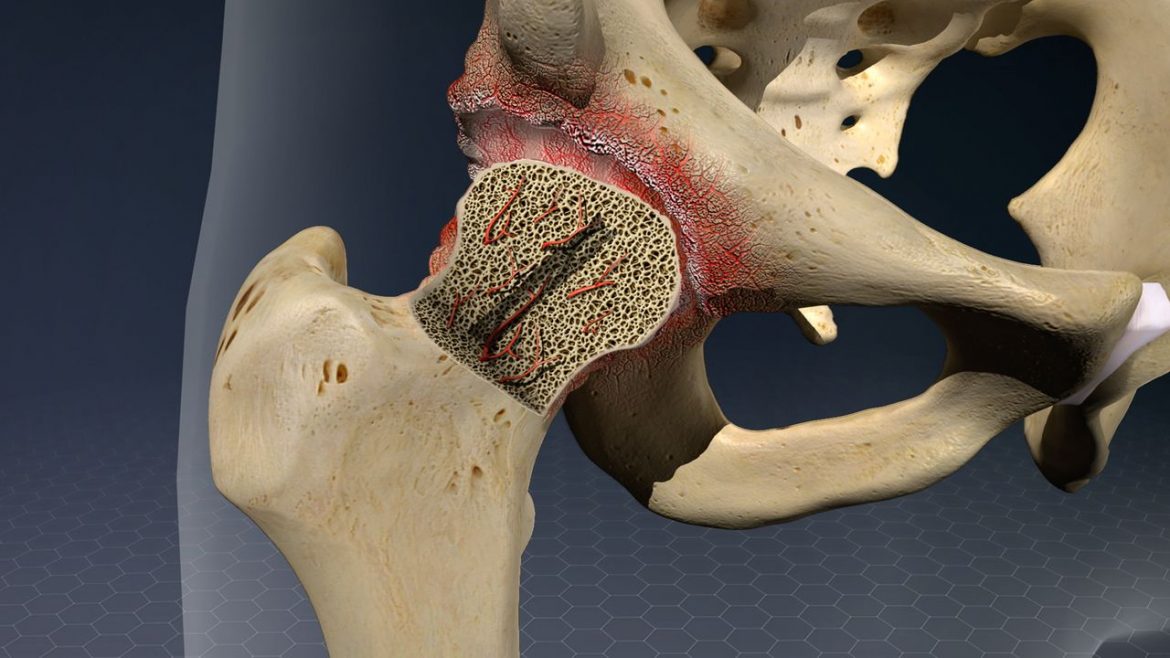
AVASCULAR NECROSIS AND ITS AYURVEDIC TREATMENT
- July 1, 2023
- Posted by Dr. Vaidya Karanvir Singh
- 0 Comment(s)
Table of Contents
INTRODUCTION
Avascular necrosis is a medical condition in which there is lack of blood supply to the bone leading to the destruction of bone tissue. It is thus known as osteonecrosis. The affected bone deteriorates with time and breaks into tiny pieces. Thereafter, the bone collapses. The main reason of avascular necrosis is dislocation of bone or fracture of bone which obstructs blood flow to the bone.
Avascular necrosis can affect people of any age but people between the ages of 30 to 50 years are more commonly affected. Pain in the affected joint is the main symptom of it. There are certain medications which can provide relief in it but most of the people need surgery. In some cases, joint replacement is also required.
WHAT ARE THE CAUSES OF AVASCULAR NECROSIS?
Bone is a connective tissue which helps in providing support to the body. Bone gets its nutrition from the blood vessels. In avascular necrosis, this blood supply gets reduced or interrupted leading to deterioration of bony tissue.
Following are the reasons which cause decreased or interrupted blood flow to the bone:
- Any dislocation of the joint
- Deposits of fats in small blood vessels
- Exposure to radiations
- Certain medical conditions which decrease blood flow to the bone such as sickle cell anemia, Gaucher’s disease, etc
WHAT ARE THE RISK FACTORS OF AVASCULAR NECROSIS?
There are some factors which make a person more prone to avascular necrosis. Following are the risk factors of avascular necrosis:
- Decreased bone density
- Having a genetic predisposition to AVN
- Excessive alcohol intake
- Cigarette smoking
- Prolonged use of corticosteroids
- Any physical trauma
- Weakened immune system such as AIDS, SLE
- Organ transplantation
- Suffering from diabetes
- Radiation therapy
- Chemotherapy
- Decompression sickness in scuba divers
- Pancreatitis
- Cancer such as blood cancer
WHAT ARE THE SIGNS AND SYMPTOMS OF AVASCULAR NECROSIS?
The signs and symptoms of avascular necrosis develop slowly over time. The common signs and symptoms of avascular necrosis are:
- Severe pain in the affected joint
- Decreased mobility of the joint
- Stiffness in the affected joint
- Difficulty in walking and standing
- Pain when pressure is put on the joint
- Limping of the limb
HOW AVASCULAR NECROSIS CAN BE PREVENTED?
By taking some of the steps, it can help in prevention of avascular necrosis. Following are some of the preventive measures of avascular necrosis:
- Eating a balanced diet
- Say no to cigarette smoking
- Avoid alcohol consumption
- Doing regular physical exercise
- Maintaining optimum weight
- Keeping the cholesterol levels in check
- Less use of corticosteroids
HOW AVASCULAR NECROSIS CAN BE DIAGNOSED?
The doctor will ask about the signs and symptoms of the disease to the patient. He will look for swelling and tenderness in the concerned part. He will take the past medical history of the patient and his family history also. The doctor will suggest some of the following tests to the patients:
- X-ray
- CTscan
- MRI scan
- Bone scan
CHANDIGARH AYURVED CENTRE’S MEDICATIONS FOR THE TREATMENT OF AVASCULAR NECROSIS
Here are some of the medications of Chandigarh Ayurved centre which are used for the treatment of avascular necrosis:
1. Detox Premium Powder
The powder is very beneficial to cure any body pain as it removes excess toxins from the body and balances the aggravated pitta and vata dosha. It consists of several herbs and bhasmas such as shukta pishti, giloy satv, parwal pishti, kamdudha rasa, moti pishti, gandhak rasayan, akik pishti, etc. The ingredients help in reducing swelling, redness, shrinkage of tear lining in the anus, burning sensation, etc.
Recommended Dosage: Take one sachet twice daily.
2. Makar Rasayan Tablet
Makar Rasayan tablet is a herbo-mineral tablet and is purely Ayurvedic formulation. CAC MAKAR RASAYAN tablet help in balancing all the three doshas. It helps to rejuvenate body tissues and act as an immuno modulator. It helps in proper blood circulation. It prevents the skin from dryness. It contains natural ingredients like shudha kuchla, guduchi satva, shudha shilajeet, ras sindoor, moonga bhasma, shankh bhasma, praval pishti etc. Herbs and minerals used for the formulation of these tablets show antioxidant, aphrodiasic, analgesic and immuno modulator properties.
Recommended Dosage– Take 1 tablet twice a day with normal water.
3. Nerve Up Tablet
Nerve up tablet is a herbo-mineral tablet and is purely ayurvedic formulation. CAC Nerve up tablets help in balancing the vata doshas. It reduces kapha dosha, and acts as nervine stimulant. It shows effective results in improving the central nervous system. It contains natural ingredients like shudha kuchala, shudha shilajeet, praval pishti, shankh bhasma etc. These contains natural vatahar properties and helps in curing vata diseases.
Recommended Dosage– Take 1 tablet twice a day with normal water.
4. Pain-O-kill Tablets
As the name suggests these tablets will kill the pain naturally. The herbs present in the formation of these tablets are Ashwagandha, Hadjod, Punarnava, Nirgundi, Methi, Garlic, etc. These herbs in combination show antioxidant, analgesic, anti-inflammatory, immuno-modulator properties. The regular use of these tablets reduce body pain and acts on its root cause.
Recommended Dosage: Take 1 tablet twice daily with normal water.
5. Pain-O-kill Syrup
The herbal syrup is prepared from ingredients like Shunthi, Shudh Guggulu, Ashwagandha, Hadjod, Nirgundi, etc that reduces pain naturally. This herbal syrup helps to reduce body pain, muscle stiffness, inflammation, & swelling. The ingredients used for the preparation of the syrup possess antioxidant, analgesic, anti-inflammatory, etc properties.
Recommended Dosage: Take 2 teaspoonfuls twice daily.

Dr. Vaidya Karanvir Singh is the younger Vaidya in Chandigarh Ayurved & Panchakarma Centre. He is the fourth generation in his family who is practicing as a general consultant in Ayurved & Panchakarma treatment at Chandigarh. In his practice, he had treated more than 1 Lakh Plus patients worldwide.

